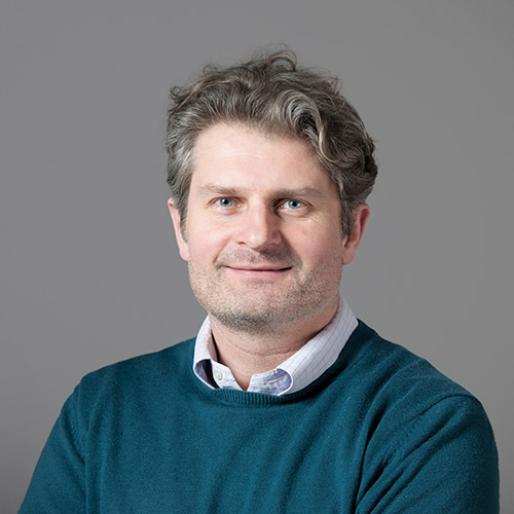The big picture: using wildflower strips for pest control
Livestock farmers have expressed a significant unwillingness to adopt greenhouse gas mitigation measures, according to a new UK survey conducted by Rothamsted researchers. Various barriers to adoption were identified, including inflexible land contracts, cost, poor awareness of mitigation measures, non-availability of markets for bioenergy crops and scepticism about the future impacts.
201 farmers were included in the survey. The results consistently showed that age, labour availability and farm sector influence the likely adoption of mitigation measures. In particular, livestock grazing farmers showed a significant unwillingness to adopt these best practices.
“Rapid uptake of greenhouse gas mitigation measures is central to reducing agricultural and land use emissions and meeting the UK Net Zero policy,” said research lead Dr Asma Jebari. “The socioeconomic challenges and barriers to uptake are poorly understood, suggesting that existing policies and structures are unlikely to deliver effective outcomes.”
Some agricultural land managers in the survey thought that those proposing GHG mitigation measures and emission reduction targets seemed to have not considered how they might impact profitability. In the case of reducing stocking density, many were of the opinion that, although reducing this in grassland would likely also reduce emissions, such action might negatively affect their farm’s efficiency and profitability and result in poor performance of grassland as a result of under-grazing.
“If I lose one [animal], I reduce my income,” said one respondent. “Reducing organic stocking rates would have no effect on decreasing carbon. In fact, it would reduce carbon sequestration in my soil,” said another.
The study also highlighted problems of limited farm resources. Shortage of agricultural labour, for instance, is an ongoing challenge in the UK and this may affect farmers’ ability to implement more innovative practices.
“Our research showed a clear need for more flexible land contracts, as this is central to the uptake of certain structural measures such as agroforestry and bioenergy crops,” said Dr Jebari. “This also extends to more cost-intensive approaches, such as the use of anaerobic digesters and long-term soil and organic amendments, which require long-term land contracts and flexibility in land use.”
This research further underscored a general poor awareness and knowledge of GHG mitigation measures, including their impact on business-as-usual farming operations. However, responses were mixed. Some agricultural land managers were fully aware of the issues and were already transitioning land use to reduce GHGs. Other respondents stated very limited awareness.
“There is a need to promote farm-level awareness and on-farm demonstrations of the various mitigation measures on offer to improve adoption among farmers. In addition, cost of uptake is a critical barrier, and there is much uncertainty about the likely outcomes of new technologies and interventions. Policy innovation could help in varying ways; such as offsets to support on-farm experimentation. In addition, landscape models to facilitate more cooperation and co-adoption between farms would be very helpful,” said Dr Jebari.

RESEARCH SCIENTIST - SOCIAL SCIENCE

Science Director
Rothamsted Research is the longest-running agricultural research institute in the world. We work from gene to field with a proud history of ground-breaking
discoveries in areas as diverse as crop management, statistical interpretation and soil health. Our founders, in 1843, were the pioneers of modern
agriculture, and we are known for our imaginative science and our collaborative approach to developing innovative farm practice.
Through independent research, we make significant contributions to improving agri-food systems in the UK and internationally, with
economic impact estimated to exceed £3 bn in annual contribution to the UK economy. Our strength lies in our systems approach, which combines strategic research,
interdisciplinary teams and multiple partnerships.
Rothamsted is home to three unique National Bioscience Research Infrastructures which are open to researchers from all over the world:
The Long-Term Experiments,
Rothamsted Insect Survey and the
North Wyke Farm Platform.
We are strategically funded by the Biotechnology and Biological Sciences Research Council (BBSRC), with additional support from other national and
international funding streams, and from industry. We are also supported by the Lawes Agricultural Trust (LAT).
The Biotechnology and Biological Sciences Research Council is part of UK Research and Innovation, a non-departmental public body funded by a grant-in-aid
from the UK government.
BBSRC invests to push back the frontiers of biology and deliver a healthy, prosperous and sustainable future. Through our investments, we build and support a vibrant,
dynamic and inclusive community which delivers ground-breaking discoveries and develops bio-based solutions that contribute to tackling global challenges,
such as sustainable food production, climate change, and healthy ageing.
As part of UK Research and Innovation (UKRI), we not only play a pivotal role in fostering connections that enable the UK’s world-class research and innovation system
to flourish – we also have a responsibility to enable the creation of a research culture that is diverse, resilient, and engaged.
BBSRC proudly forges interdisciplinary collaborations where excellent bioscience has a fundamental role. We pioneer approaches that enhance the equality, diversity,
and inclusion of talent by investing in people, infrastructure, technologies, and partnerships on a global scale.
The Lawes Agricultural Trust, established in 1889 by Sir John Bennet Lawes, supports Rothamsted Research’s national and international agricultural science through the provision of land, facilities and funding. LAT, a charitable trust, owns the estates at Harpenden and Broom's Barn, including many of the buildings used by Rothamsted Research. LAT provides an annual research grant to the Director, accommodation for nearly 200 people, and support for fellowships for young scientists from developing countries. LAT also makes capital grants to help modernise facilities at Rothamsted, or invests in new buildings.